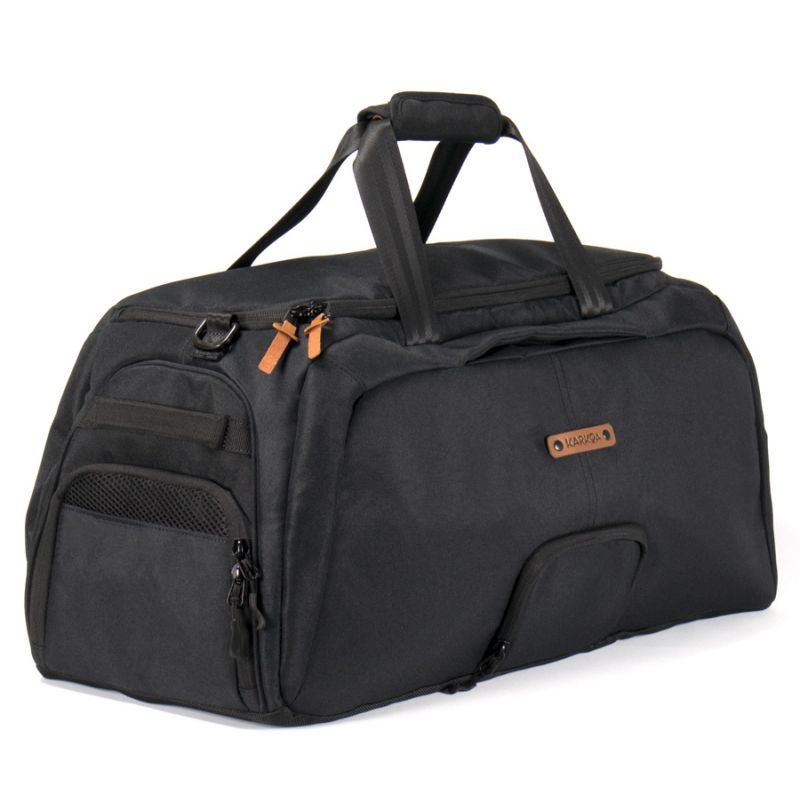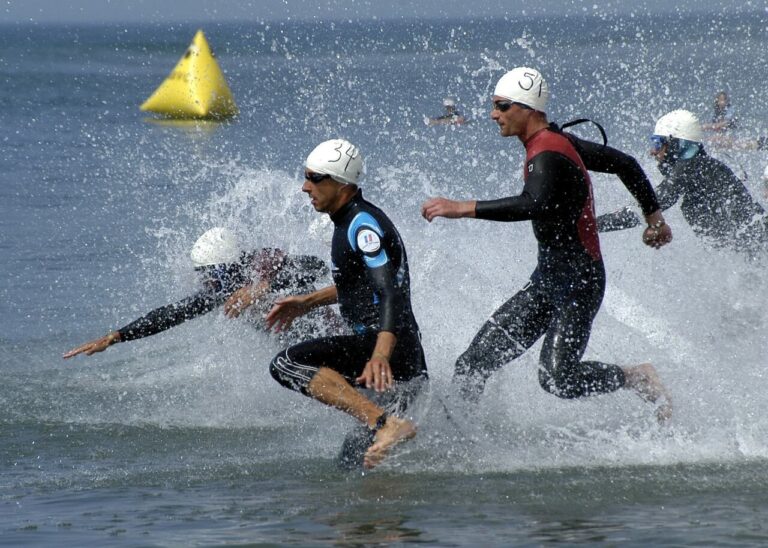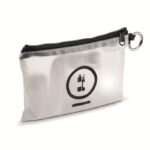By incorporating pulley exercises into your routine, you can effectively target each part of your shoulders, ensuring harmonious and balanced development.
The benefits of shoulder pulley exercises
The versatility of the pulley allows you to easily adjust the height and resistance to suit your strength level and fitness goals. Whether you’re looking to increase muscle size or improve muscular endurance, different pulley exercises such as lateral raises, front raises or the pulley press can be adapted to meet these specific needs. This equipment is also beneficial for preventing or recovering from injuries by allowing you to work in a stable plane of movement.
A few recommendations
While performing these exercises, it is crucial to maintain correct posture to maximise muscular benefits and minimise the risk of injury. It is recommended that you do a proper warm-up of the whole body, with particular attention to the shoulders, before starting to work with the pulley. Keep your movements fluid and controlled, and concentrate on the feeling of contraction in the shoulder muscles to ensure you get the most out of each repetition.
The Basics of Shoulder Pulley Training
Before starting shoulder pulley training, it’s essential to understand the anatomy of this region, the importance of correct posture, the principles of choosing the right load and technique, and how to avoid injury.
Anatomy of the Shoulders
The shoulders, or deltoids, are made up of three muscle groups: anterior, middle and posterior. Pulley training also involves the rotator cuff muscles, the scapula, and partially the trapezius. Performing frontal raises targets the anterior fascicle, while lateral raises and external rotations serve to strengthen the middle fascicles and rotator cuff. The military stretch is a complete exercise for the entire deltoid.
The importance of posture
Good posture is crucial, as it affects the effectiveness of the exercise and the safety of your shoulders. Your back should remain straight and your shoulder blades retracted, with a slight arch of the spine. Make sure your hips are aligned with your spine, which improves balance and load distribution.
Choice of Load and Technique
Opt for a load that allows you to respect technique without compromising form. Your elbows should be slightly flexed during the lifts and the movements should be controlled. Progression is achieved by increasing the load or modifying the technique, such as including pauses or increasing the speed of execution.
Injury prevention
Preventing injury involves warming up properly and recognising the signs of excessive muscle fatigue. Particular attention to recovery is essential; tendonitis or other shoulder injuries can occur with overtraining. Slightly bent knees during exercise can help maintain balance and protect the back.

Fundamental Pulley Exercises
The pulley is a versatile tool that effectively targets the deltoids, trapezius and shoulder muscles. These fundamental exercises are designed to strengthen and develop your shoulders using various configurations of the pulley.
1- Face Pull or Pulley Military Press
Stand facing a high pulley with a pronated grip. This movement puts the emphasis on the deltoids as a whole, especially the anterior, while also involving the trapezius. The load should be adapted to your level to prevent injury.
2- Overhead Press at the Pulley
Effectuez ce mouvement face à la poulie basse. Avec une prise neutre et les coudes alignés avec la clavicule, montez les mains au-dessus de la tête. Les faisceaux antérieurs et moyens des deltoïdes sont principalement sollicités durant cet exercice.
3- Lateral Pulley Raises
Attach a handle to the low pulley and raise the arm away from the body. This movement effectively isolates the medial fascicle of the deltoids and can include unilateral or bilateral variations with a rope or handle.
4- Front pulley raises
Similar to lateral raises, these raises are done facing the low pulley. Raise your arms in front of you to shoulder height, to work the anterior deltoids and a little of the upper trapezius.
5- Chin pull at the Pulley
Use the low pulley with a barbell or rope. Pull towards your chin, keeping your elbows high, targeting the trapedius, deltoids and upper pectorals near the collarbone.
6- External and internal rotation of the shoulder at the Pulley
This exercise can be done in a standing position, with a rope attached to the low pulley. External and internal rotations strengthen the small rotator cuff muscles such as the subscapular, and increase shoulder stability.
7- Bird at the Pulley
For this exercise, use the low pulley. Lean with your torso bent slightly forward and pull your arms back. This targets the back of the shoulder: the posterior deltoids as well as the rhomboids and the little round.

Advanced exercises and variations
When it comes to shoulder pulley training, experienced exercisers often seek to incorporate advanced exercises and variations to target different muscle fascicles. These routines involve the use of dumbbells and heavy loads for gains in strength and hypertrophy, as well as making greater demands on the stabilising muscles.
8- Inclined bench press with pulley
The reclined bench press with pulley accentuates the work on the anterior shoulder fascicle. In the inclined position, you should:
- Configure the machine with a heavy load suited to your level.
- Grasp the handle of the pulley with one hand while lying on an inclined bench.
- Perform the movement by pushing the load in an arc while keeping the forearm perpendicular to the ground.
It is crucial to maintain tension on the anterior fascicle throughout the movement to maximise the effectiveness of the exercise.
9- Rowing Menton Unilateral at the Pulley
The unilateral chin-rowing pulley is a variation that focuses effort on the posterior fascicle and forearms, also strengthening unilateral ability. For this exercise:
- Set the pulley at an appropriate height and select a moderate load.
- Stand up straight and grasp the handle with one hand.
- Pull the handle towards your chin, keeping your elbow high and isolating the work on your shoulder.
Who should do shoulder pulley exercises?
- Weight training beginners: If you’re just starting out, shoulder pulley exercises allow you to learn the movements in a controlled way. This reduces the risk of injury while familiarising you with the correct technique.
- Sportspeople in rehabilitation: In the event of a shoulder injury, your physiotherapist may recommend pulley exercises. They contribute to a gradual recovery of strength and range of movement.
- Bodybuilders: Looking to develop and define your deltoid muscles? Pulley shoulder exercises are ideal for specifically targeting these muscles.
- Athletes: Whether you play baseball, tennis or swimming, strong shoulders are essential. Pulley exercises can help you improve the strength and stability of your shoulder girdle.
- People with chronic shoulder pain: Adjusting the weight on the pulley allows you to adapt the intensity. This helps you strengthen your shoulders without straining.
Note: It’s essential to consult a professional before starting any new fitness programme, especially if you have any pre-existing medical conditions affecting your shoulders.
Training programming
When setting up your training routine for the pulley shoulders, it’s crucial to consider your level of strength training experience. Carefully crafted programming will promote strong, long-lasting progression while minimising the risk of injury.
Beginners:
- Frequency: 2 times a week
- Sets: 3 sets of 12-15 repetitions
- Rest: 60 to 90 seconds between sets
Intermediates:
- Frequency: 3 times a week
- Sets: 4 sets of 8-12 repetitions
- Rest: 75 to 90 seconds between sets
Events
- Frequency: 4 times a week with segmented training sessions
- Sets: 5 sets of 6-10 repetitions
- Rest: 90 to 120 seconds between sets
Think about incorporating periods of active recovery to encourage tissue regeneration after intensive sessions. A good balance between training and recovery is essential for continued gains. For consistent progression, gradually increase the load and intensity, while paying attention to your body’s signals. Mild muscle soreness is normal, but in the event of acute or persistent pain, reconsider your routine and consult a specialist.
Remember, consistency and dedication are the keys to harmonious shoulder development. Also consider the importance of nutrition and hydration in your training routine. Your body needs adequate fuel to train and recover effectively.
Karkoa sports bag
When it comes to choosing a sports bag for your bodybuilding sessions, the Karkoa brand offers solutions that combine durability and functionality.
Durability and comfort
Your bag needs to stand the test of time while still being comfortable to wear. This is essential given the weight you’ll be carrying. Karkoa bags are made from 600D high-density polyester for extra strength, including a 1600D reinforced bottom. Dense EVA foam adds to the comfort, whether you’re carrying the bag on your shoulder or on your back.
Organisation and Space
With a generous interior space of 40 litres, the bags are designed to hold all the equipment you need for weight training. Your bag includes :
- A main compartment for your clothes, towel, etc.
- Insulated pocket for up to two pairs of shoes.
- An insulated compartment to keep your drink cool.
- A waterproof pouch for your toiletries.
Essential features
Make sure you select a bag with several pockets so you can separate and find your gear easily. Sturdy, waterproof bags are particularly good, allowing you to separate your wet from your dry gear. All in all, a Karkoa bag is an ideal companion to help you stay organised and ready to take on the challenges of bodybuilding with confidence.
















